A Brick And Mortar Repair Job Detailed
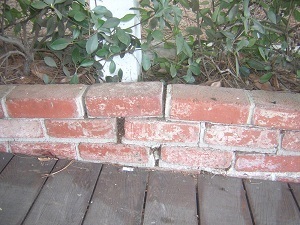
As you can see, these bricks and the mortar around them have been broken up by roots and they need to be restored. The way to fix these bricks is to first pull out all the ones that are loose and then "trim" the old mortar from them. You trim them by getting a wide cold chisel called a brick set and tapping right on the edge of the bricks between the brick and the mortar. You must wear gloves for this type of repair, or you'll be sorry!
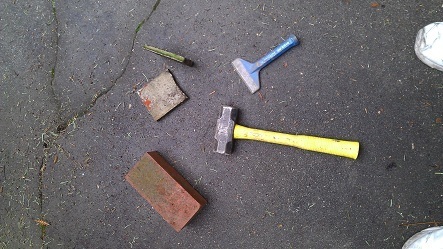
Of course, during this brick repair you have to try to just pull out only the loose bricks, not the solid ones. You have to also carefully trim the bricks that are not loose so there is room for the new mortar you are going to put in. This can be tricky because you can loosen the surrounding bricks and mortar by trying to trim them, so be careful. Sometimes you have to just keep going until they are very solid.
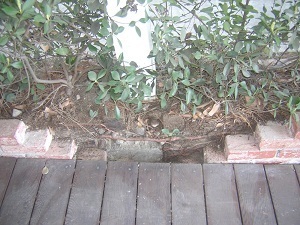
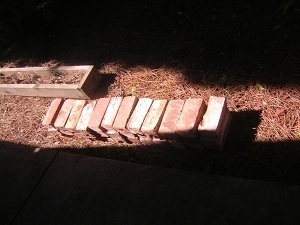
When you're trimming the bricks you will start to get a feel for it. If you put the brick set in just right place between the brick and the old mortar the mortar will pop right off the side of the brick with just a tap. When all the bricks are trimmed, and the hole they are going to go back into is trimmed, you are ready to mortar the bricks back in.
Incidentally, you can't see it, but during this repair on one area I had to actually pour a base of cement because the roots were exposed. I had to make a flat level surface over the top of the roots to set the bricks on.
you'll need a plastic tub to mix the mortar, a trowel and the tools shown (the bottle is cement adhesive, which is necessary if you are mortaring over cement):

You will have to replace any bricks that were broken and the best way to do this is to take one of them to a paving or building supply/rockery place. Also most brick fix it jobs will require regular grey morter, but there are different color mortars so you should try and match that to.
It's important to get the correct amount of water and mortar mix together. You can either put more mortar if it's too wet or more water if it's too dry. That's what you want, not too wet, not too dry, but right in the middle.
It's best to mix mortar on grass and not concrete because can really make a mess. It shows up on concrete and any other surface (in this case wood as you can see) If your not careful. Also, you don't want to breathe mortar in its dry form, so wear a mask. I usually use a regular trowel to mix and a mason's trowel (that tool that's pointed and flat) to load mortar onto the bricks. The key is to make sure you're starting with a level set of bricks or a level concrete surface, and to maintain a level surface as you add bricks and mortar. This involves doing a good job estimating the thickness of mortar between the original bricks. I usually just wing it but it's probably a good idea to use a level.
Lay the mortar in with your mason's trowel on top of the installed bricks and on the side of the one that the new one will be next to, get the brick wet by dipping it into a pail of water and gently push and wiggle it into the mortar you placed on top of them. You can kind of "chop" it in between the sides of the bricks to build it up in between. Obviously, you match the same staggered pattern the bricks were in before you took them out.
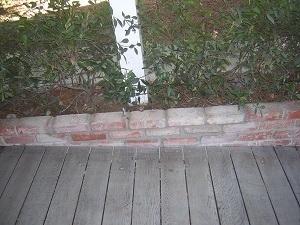
you can either use a jointer tool or your fingers with gloves to smooth out the mortar in order to make it match the surrounding brick joints. It's very very important to have a pail of water and a very wet rag right by you through this whole process. You have to constantly wipe the mortar off places where it doesn't look good. Sometimes it isn't a smooth look and they just let the mortar squeeze out between the bricks. The key is to be to pay attention to the details and just try to make it match well as you can.
Lastly, use your pail and rag to clean of the mortar on the other surfaces, using a new clean cloth to do it. This is very important because if you let the mortar dry on the other services it will look terrible, even a very thin film of it. A very wet clean rag can get any trace of a mortar off. Watch it dry for awhile to see if there is a film of mortar where it shouldn't be.
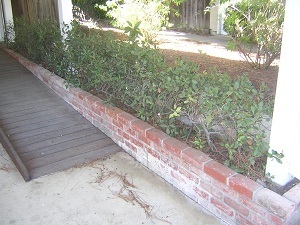
I recommend reading as much as possible about this subject. Follow the link below to a good book by Time-Life Books:
Brick, Stone and Concrete (Fix-It-Yourself)



